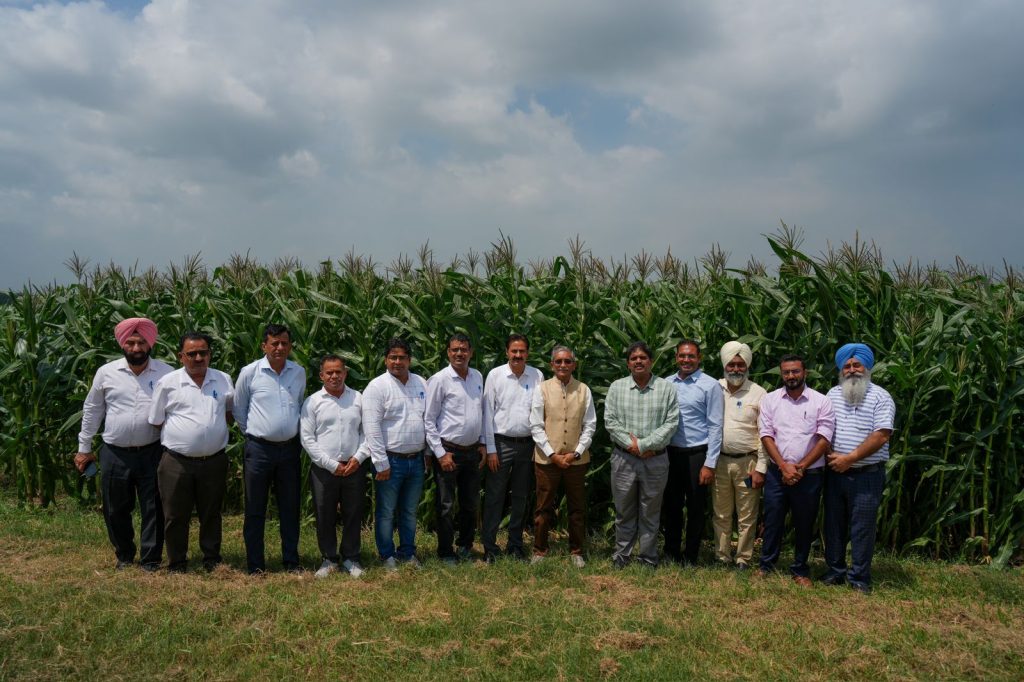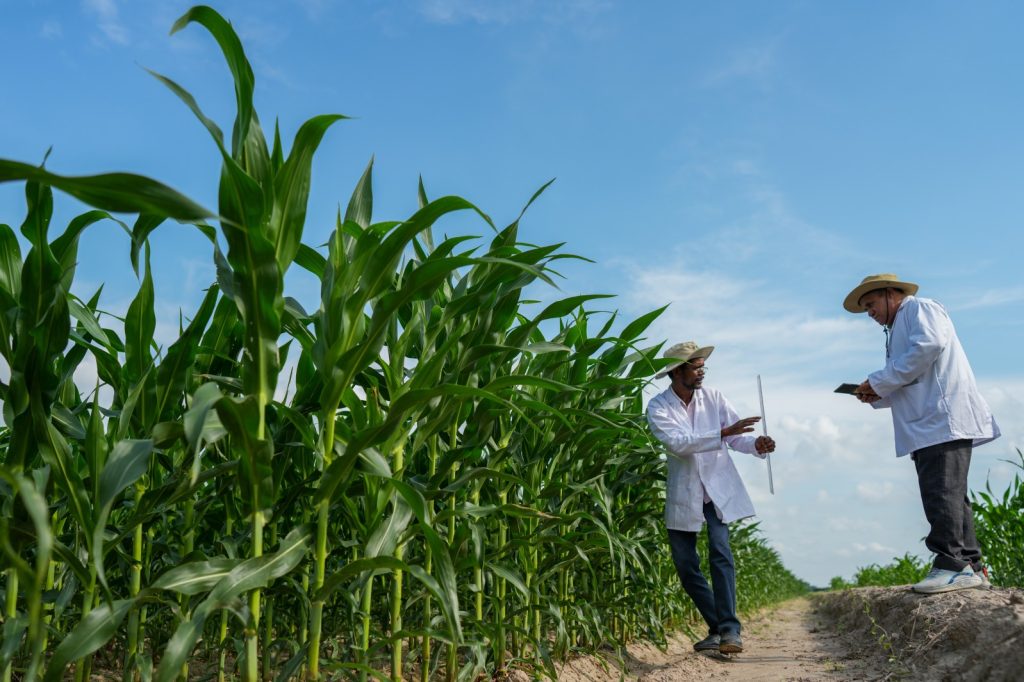Crop Diversification in Punjab: Challenges and Opportunities
By Pardeep Kumar, BISA

Crop Diversification in Punjab: Challenges and Opportunities
Agriculture has been the backbone of Punjab’s economy, making it one of India’s most agriculturally prosperous states. However, the state’s heavy reliance on traditional cropping patterns, mainly wheat and rice, has resulted in significant ecological, economic, and social challenges. Crop diversification could be the key to addressing these issues, paving the way for sustainable agricultural development.
Current Scenario in Punjab Agriculture
The Green Revolution in the 1960s transformed the state of Punjab into India’s breadbasket. The state’s agricultural growth has relied mainly on wheat and rice, significantly contributing to the country’s food grain stocks. However, the rice-wheat cropping system, though highly productive, has caused a range of environmental and other second-generation problems. These include low input-use efficiency, nutrient deficiencies, soil health deterioration, residue burning, and reduced productivity. Additionally, pesticide overuse and improper application have led to pest, disease, and weed management challenges. The rise of herbicide-resistant weed species is further threatening the sustainability of both rice and wheat production. Moreover, this mono-cropping system has caused an alarming decline in water tables due to excessive groundwater extraction for rice cultivation. The relentless cultivation of rice also depletes groundwater, with over 200,000 hectares added to rice farming in the past decade alone, further stressing the ecosystem and depleting biodiversity.
Challenges in Promoting Crop Diversification
- Economic Barriers:
- Farmers’ reliance on Minimum Support Price (MSP) for wheat and rice reduces the incentive to switch to alternative crops like maize, pulses, and oilseeds.
- Unstable markets and fluctuating prices for crops like soybean and vegetables make diversification risky.
- Infrastructure Deficiencies:
- Limited storage facilities and food processing units for non-cereal crops.
- Irrigation systems are tailored for water-hungry crops (like rice and spring maize), with no pricing for groundwater, making it challenging for farmers to shift.
- Knowledge and Skill Gaps:
- Limited awareness among farmers about the benefits of crop diversification.
- Insufficient training programs on modern techniques for cultivating alternative crops.
- Policy and Institutional Hurdles:
- Policies are heavily skewed towards wheat and rice production.
- Delayed implementation of diversification schemes and lack of coordinated efforts among stakeholders are key bottlenecks.
- Fragmentation of Landholdings:
- The average landholding size in Punjab has been decreasing, making it challenging for farmers to experiment with new crops or adopt mechanization for diversified farming.
- Debt and Financial Stress:
- High levels of farmer debt, exacerbated by input-intensive farming practices, leave little financial capacity to invest in crop diversification.
- Environmental Constraints:
- Continuous mono-cropping has led to a rise in pest infestations and diseases, which could also affect new crop varieties.
- Salinity issues in certain regions limit the suitability of soils for alternative crops.
- Market Inefficiencies:
- Weak market linkages and inadequate price realization for perishable crops discourage farmers from diversifying beyond staples.
Opportunities for Crop Diversification

Crop diversification presents several opportunities to improve the sustainability and profitability of Punjab’s agriculture. One key opportunity is sustainable resource use, where shifting to less water-intensive crops like maize, pulses, and millet can help mitigate water scarcity. Additionally, adopting integrated farming systems that combine crops, livestock, and agroforestry can enhance resource efficiency. Kharif maize cultivation offers another viable alternative to water-intensive rice. Maize requires significantly less water, making it well-suited for Punjab’s agro-climatic conditions. Its cultivation can help restore soil fertility through crop rotation while reducing groundwater dependency. Furthermore, the growing demand for maize in the animal feed and starch industries provides an assured market potential.
Numerous public and private agricultural research organizations have been developing sustainable and profitable cropping systems suited to local conditions for Kharif-maize-based crop diversification. Successful examples for Punjab include systems like maize-wheat-green gram, maize-potato-wheat, maize-potato-onion, and maize-potato-mentha, among others. These systems offer opportunities to replace rice and wheat, improving soil fertility and generating additional income based on regional demand.
From an economic perspective, high-value horticultural crops like fruits and vegetables provide better profit margins while encouraging organic farming and niche markets, which can open new income streams for farmers. Another benefit is improved soil and ecosystem health, as diversified cropping patterns reduce soil degradation and improve biodiversity. Crop rotation and intercropping practices naturally replenish soil nutrients, supporting long-term agricultural sustainability.
Finally, government initiatives and schemes like the National Mission on Sustainable Agriculture (NMSA) and Rashtriya Krishi Vikas Yojana (RKVY) actively support diversification efforts. Punjab’s initiatives, including crop insurance and subsidy programs, can also be leveraged to promote the adoption of alternative crops, further supporting the transition to a more diversified agricultural system.
Way Forward
- Policy Reforms: Revising MSP policies to include alternative crops and ensuring timely procurement can encourage farmers to diversify.
- Infrastructure Development: Establishing food processing units, storage facilities, and efficient supply chains for diversified crops.
- Capacity Building: Organizing awareness campaigns, workshops, and training programs to educate farmers on sustainable practices and market opportunities.
- Research and Development: Focusing on high-yield and climate-resilient varieties of alternative crops.
- Public-Private Partnerships: Encouraging private investment in agri-business and value chain development.
Conclusion
Crop diversification in Punjab has become a necessity, not just an option, to ensure the state’s agricultural sustainability and resilience. The overreliance on traditional cropping systems, such as the rice-wheat rotation, has led to numerous environmental, economic, and social challenges. By addressing these issues and capitalizing on available opportunities, Punjab can transition from a resource-intensive monoculture to a diversified and sustainable agricultural system. This shift is vital for securing farmers’ livelihoods, fostering long-term agricultural health, boosting national food security, and restoring ecological balance.
Diversification offers numerous benefits, including better soil health, reduced water usage, and improved pest management. It also opens new avenues for income generation through high-value crops like fruits, vegetables, and organic produce, which can contribute to the local economy. Moreover, integrating sustainable farming practices can ensure that Punjab remains a vital agricultural hub for future generations.
In collaboration with the Government of Punjab and other key stakeholders, BISA has actively promoted and facilitated sustainable crop diversification options. These efforts focus on educating farmers, improving infrastructure, and creating robust market linkages for alternative crops. By working with farmers and industry partners, this initiative aims to create a thriving, diversified agricultural system that benefits the environment and the communities that depend on it. Through these combined efforts, Punjab can lead the way in transitioning to a more resilient and sustainable agricultural model.